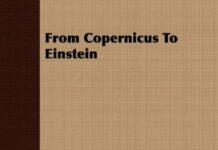
Ebook Info
- Published: 2012
- Number of pages: 305 pages
- Format: PDF
- File Size: 9.31 MB
- Authors: Hans Reichenbach
Description
Ever a source of philosophical conjecture and debate, the concept of time represents the beating heart of physics. This final work by the distinguished physicist Hans Reichenbach represents the culmination and integration of a lifetime’s philosophical contributions and inquiries into the analysis of time. The result is an outstanding overview of such qualitative, or topological, attributes of time as order and direction.Beginning with a discussion of the emotive significance of time, Reichenbach turns to an examination of the time order of mechanics, the time direction of thermodynamics and microstatistics, the time direction of macrostatistics, and the time of quantum physics. He offers coherent explanations of the analytic methods of scientific philosophy in the investigation of probability, quantum mechanics, the theory of relativity, and causality — methods that he not only applies here but also helped to develop and refine.Physics Today observed that “For a generation Professor Reichenbach has worked as almost no other man to bring to the interpretation of modern physics the critical and reflective thinking of a trained philosopher. Most physicists who retain an interest in philosophy, and many who wanted simply to understand physics, have read some of the earlier books of Reichenbach. This one is . . . the best by a good deal.” Introduction. Appendix. Index.
User’s Reviews
Reviews from Amazon users which were colected at the time this book was published on the website:
⭐In this posthumous book, Professor Reinchenbach examines exhaustively the notion of time as a physical reality and its relationship with entropy. In my opinion, there is another aspect that he discusses and that may be more meaningful and perhaps may be not be rightfully appreciated. I believe that his excellent critic of determinism in classical physics as it is understood even today may be the best contribution of his book. He concludes in chapter III.11: “We are allowed to regard even the evolution of the universe as a genuine probability chain, in which each successive step is a matter of chance, whereas the sequence as a whole is governed by statistical laws as dependable as the so-called strict causal laws of physics.” It has always been risky to doubt determinism in classical physics. Reichenbach took such risk and made a valuable contribution to a better understanding of a probabilistic determinism in classical physics . Thanks to Mrs. Reichenbach for having made this publication possible.
⭐I have now read 3 of Dr. Reichenbach’s books published on Kindle. All three illustrate the author’s deep understanding of and appreciation for the modern foundations of physics. In this particular volume (the last book Dr. Reichenbach wrote and published after his death) the Dr. falls mid way (in a philosophical sense) between his even more philosophical exploration of space and time together (“The Philosophy of Space & Time”) and his more technical exploration of quantum mechanics in “Philosophic Basis of Quantum Mechanics”. In this book, Reichenbach is concerned to show how the direction of time can be derived from physics and he derives it in 4 different ways, from thermodynamics, statistical mechanics, quantum mechanics, and the observation (in the macro-world) of marks, or history. He shows how each of these derivations is consistent with all the others. Indeed their consistency is in part based on an assumption common to each approach, that the over-all thermodynamic world-line of the universe throws off “branches” and that each of these branches proceeds semi-independently taking a course that, in general, but not in every particular, follows that of the general thermodynamic arrow.In these days it is said that every equation one puts in a book halves your readership. If that were the case Reichenbach would have about 2 readers in the world here and that goes double for the previous “quantum mechanics” book. But one can read past the equations (Indeed it makes the book go much faster if you do) and still get at what the author is trying to convey. Because of Reichenbach’s place in the history of physics and philosophy of science he is able to focus on his subject with a level of detail that is simply glossed over in more modern treatments. As with the other two books, Reichenbach is very much at pains to point out that the assumptions and definitions we bring to the examination of physical phenomena do very much affect how we interpret our conclusions. Modern writers simply ignore this for the sake of explicating their particular point of view, but Reichenbach takes pains to explain the difference that the alternatives make. The next time I read Penrose, Stapp, Greene, Thomas, and others I’m going to understand them a lot better thanks to Reichenbach.
⭐Upon reading the second chapter I was astounded at how dismissive he was about identity and persistence. He makes a controversial presumption about identity without any arguments for why he presumes such identity and without giving anything close to identity criteria. He then glosses over the problem of identity through time, whether endurantist or perdurantist or whatever. These are important issues in the philosophy of time, but this is not the project that He wants to engage with in this book. His concern is with questions on the “arrow of time” and the philosophical foundation of statistical mechanics: whether statistical mechanics is a good explanation for the second law of thermodynamics or not. R. works hard to validate the laws by developing a mathematical basis using probability to explain them. His explanation for why the universe is moving from a low entropy state to a high entropy state by dealing with the symmetry problems in statistical mechanics, that is, the symmetry of Newtonian physics and the statistical postulate with respect to time, does seem ad hoc. He posits a branching system, which has been updated by Paul Davies in “The Physics of Time.” R. gives two arguments to buoy up his branching system: i) an idea of a causal chain that creates a net, which is open and ii) a probability lattice. While he grounds the soundness of his probability lattice in, what I assume to be, elegant equations; but as we know, math does not a universe make (although that’s not an uncontroversial claim). The probability lattice, while requiring a suspension of disbelief to analogize it to his branching system qua explanation of why the universe came from a low entropy state towards a higher one and why there “seem” to be entropic subsystems (e.g. a fully formed ice cube melting in a glass of water), is predicated on Reichenbach’s belief that the arrow of time is explained by the phenomena of cause and effect as a open chain that creates a net. For him, a cause is an interaction and an interaction creates a subsystem which branches off of the overall trajectory of the entropy of the universe. I have no idea what this means. Why is cause an interaction and what is an interaction exactly? Does cause and effect have to be the working of occult powers? Are interactions causally explained? Can interactions be caused, since by definition they are causes? R. makes a valiant and tedious effort to back up his theories with a mathematical foundation. But, at times it seems that he is getting bogged down in theoretical mathematics and I don’t know if he is successful in his overall project. And all his theories, or more accurately, his equations, seem to make the philosophical underpinnings of statistical mechanics more complex and fantastical than explanatory of its phenomena.
⭐The book is not clear or Im terrible at math. Eithet way, I found myself realizing tharmt only a portion of what I read was processed. That portion however was interesting.
⭐An extraordinary and highlydetailed account of the nature of time itself: no small feat! This is a quite remarkable book, the contents of which are hard to review fairly as people will come to it differing vastly in their ability to understand it. Purely cosmetically it’s just fine and I concur with other reviewers that the old print typeface is really enjoyable, the paper is good quality etc – but that’s not why you’re reading reviews I’m guessing. If you’re considering this book, then what’s really important is what it communicates and in what manner. The important question is ‘will I understand, and therefore be able to appreciate, this book?’Speaking as someone keenly interested in maths and physics but with no formal studies in either beyond A-level/college, this text is right at the top end of what I can handle. I enjoyed it immensely and no doubt will again, but with the caveat that it was a real exercise in concentration and determination at times. I’m a prolific reader, and I’ll generally tough things out, so the fact that I almost didn’t make it through this one should hopefully prepare you for what’s in store. That said, if the formal proofs are beyond you, they are usually accompanied by explanations in plain English which help you along.In short, it’s really thorough, the writing is stylistically easy and enjoyable to read, and if you’ve got an undergrad or higher graspof the subject matter and don’t panic when you see a page-full of equations, then you’ll certainly get a great deal out of it.If not, then don’t be put off necessarily, but be warned!A hard-going, hard science, highly worthwhile read.
⭐The clearest, most informative, most convincing take on the nature of time I’ve read- the best since Whitrow’s “Natural Philosophy of Time”.Reichenbach discusses six percieved characteristics of time:1. Time moves from past to future2. The present is now3. The past doesn’t come back4. We can’t change the past but we can change the future5. We have records of the past but not of the future6. The past is determined, the future is indeterminedand arrives at genuinely enlightening conclusons regarding them all.This book can be read independently of “The Philosophy of Space and Time”. You need reasonable mathematics to get everything out of it, but even difficult maths is concluded with a fairly straightforward assessment of the consequences.
⭐I have always been interested in the mechanics of time, and for about one third of this book my interest was held. However, after a while hard-core mathematical equations tend to take over; so I would only recommend the book for readers with a solid grounding in advanced mathematics.
⭐This is an advanced philosophy of physics book.I like the vintage-style print.
⭐Lots of food for thought. A thoroughly up to date and detailed survey of contemporary knowledge. Beautifully well written.
Keywords
Free Download The Direction of Time (Dover Books on Physics) in PDF format
The Direction of Time (Dover Books on Physics) PDF Free Download
Download The Direction of Time (Dover Books on Physics) 2012 PDF Free
The Direction of Time (Dover Books on Physics) 2012 PDF Free Download
Download The Direction of Time (Dover Books on Physics) PDF
Free Download Ebook The Direction of Time (Dover Books on Physics)


